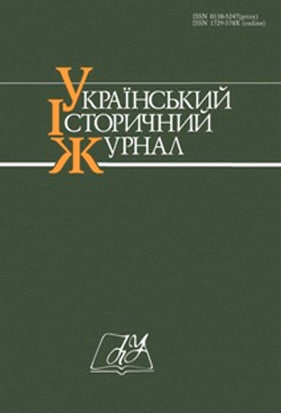Fishing Industry of Olbia Pontica: Traditions of the Metropolis and Local Specifics
DOI:
https://doi.org/10.15407/uhj2022.03.030%20Keywords:
fishing, Olbia Pontica, Mediterranean, antiquity, fishing technologiesAbstract
The purpose of the study is a comprehensive analysis of the fishing industry of Olbia Pontica in the context of the study of ancient Greek fishery in general. The fish resources of the Buh River lower region, as well as the technologies and export potential of local fisheries are analyzed.
The research methodology includes a comprehensive analysis of information from a number of historical and natural disciplines (archaeology, archaeoichthyology, ichthyology, paleogeography, ethnography) in order to obtain an integrated picture of the structure of the fishing industry of Olbia.
Research novelty. For the first time in historiography, fishery of the ancient states of the northern Black Sea coast are considered not in isolation, but in the context of Ancient Greek fishery as a whole. The peculiarities of Olbian fishing as an integral part of the fishing of Ancient Greece have been identified.
Conclusions. A comparative analysis of Olbian fishery and fishery of the city-states in the Aegean basin allows us to draw conclusions about the significant differences between them. This was due to a qualitative difference in the structure of the catch which, in turn, was due to the dissimilar natural conditions of the Buh River lower region, with its large rivers, estuaries and desalinated marine waters on the one hand, and the Aegean basin, with its saltwater fauna on the other. These differences forced Olbian fishermen to modernize the fishing technologies brought from the metropolis, adapting them to local conditions. In general, in the waters of the Buh River lower region, fish of more valuable species than in the Mediterranean were caught. In particular, sturgeon and catfish were intensively caught here. This fact created a significant export potential for local fishery. The article analyzes fishing technologies (usage of fishing nets, tackles and harpoons) and methods of processing fishing products. The specifics of sturgeon processing methods (salting, smoking) are indicated. These species were not used to make garum, therefore there are no fish salting baths in Olbia. Besides the fish flesh, glue and caviar could have also been exported. The export potential of Olbian fishery was quite significant.


